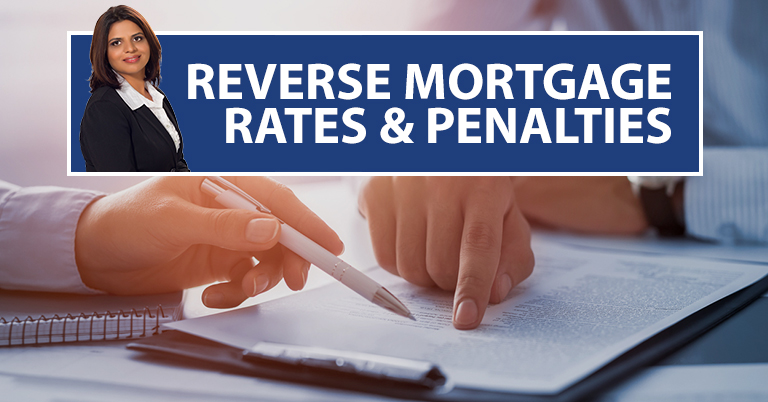Reverse Mortgage Rates & Penalties
When my clients come into my office and inquire about reverse mortgages, one of the first things they ask about are my rates. While it is a perfectly valid question, the answer is often complicated. Reverse mortgage rates are particular to every individual, and because of this it can be difficult to generalize. What I can tell you, however, is what will contribute to calculating your unique rate so that when the time comes to beginning your reverse mortgage process you won’t be surprised!
If you aren’t already familiar with what a reverse mortgage is, I have released several blog posts about the benefits and key points surrounding reverse mortgages. Make sure to check those out if you are unsure about this product.
Now, down to business. What are some common reverse mortgage rates? Recent rates have been around 5-6%, and which rate you get (along with the borrowing amount) will depend on a few things. Those things are:
- You (and potentially your spouse’s) age
- The amount to be borrowed
- The location of your home
Compared to other mortgage products, reverse mortgages generally have a lower interest rate, and this can be a great benefit when coupled with the fact that you do not have to make monthly payments. Just think of it this way: the slightly higher rate you may pay compared to a Home Equity Line of Credit helps you secure all of the benefits that a HELOC won’t give you, such as the ones just mentioned.
Another thing you have to consider is interest compounding. For every mortgage in Canada, compounding happens semi-annually. The good news for you is that your home equity growth can offset this interest cost, and actually end up saving you money. On top of this, you can forget the common misconception that reverse mortgages reduce your home equity. In fact, this is only true if your home does not grow in value (which is highly unlikely given the current real estate market). How much value does your home need to gain in order to offset the cost of the reverse mortgage? The approximate rate that your home equity needs to grow at is half of your mortgage’s interest rate. If your home attains this growth, or exceeds it, you could find yourself in a great financial position!
Finally, let’s talk about penalties. While most people who open a reverse mortgage product are at a low risk of being penalized because they want to stay in their home for life, some people rest easier knowing the full extent of the penalties attached to their reverse mortgage product. The main rule about reverse mortgage penalties is that they are pretty much non-existent if you choose to pay back the amount after 5 years, and they are completely non-existent if the owner passes away without paying back the loan. It’s also worth noting that if the owner has to move to a nursing home for medical reasons, the penalty is reduced by 50%. Although some of the penalties are similar to a normal mortgage, the penalties in the first year are slightly higher than average. Be sure to take this into account when deciding if this product is right for you.
Ready to find out how a low interest rate reverse mortgage can benefit you? Let’s chat about reverse mortgages. Apply today to contact me with any questions.

